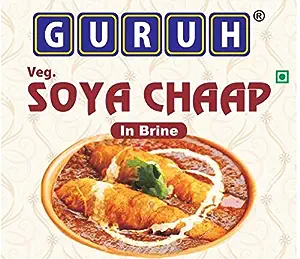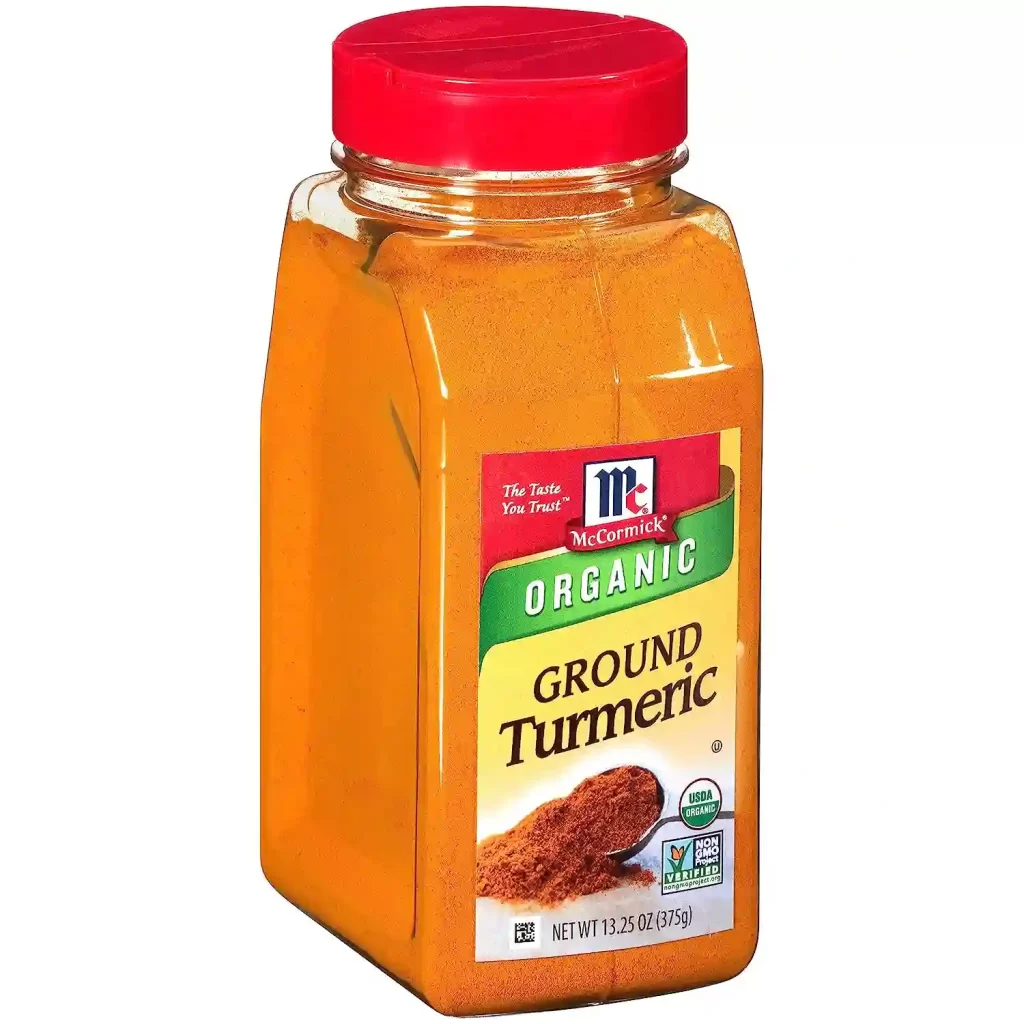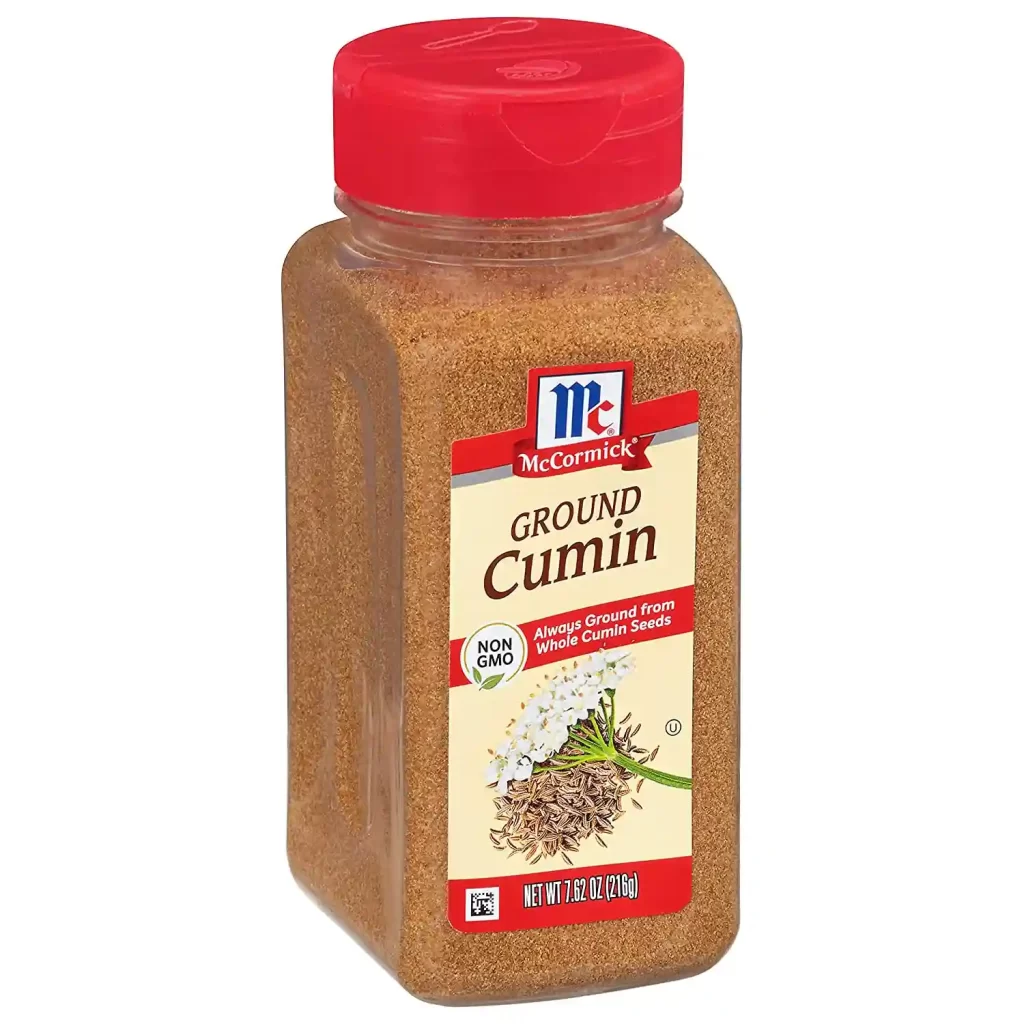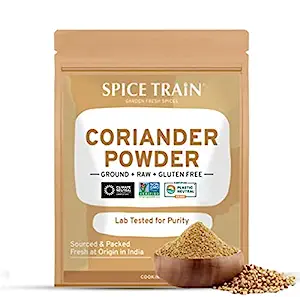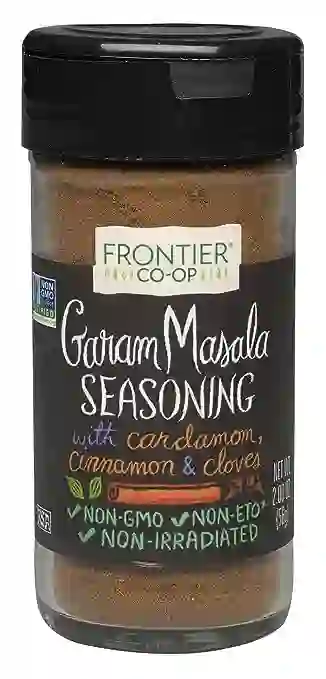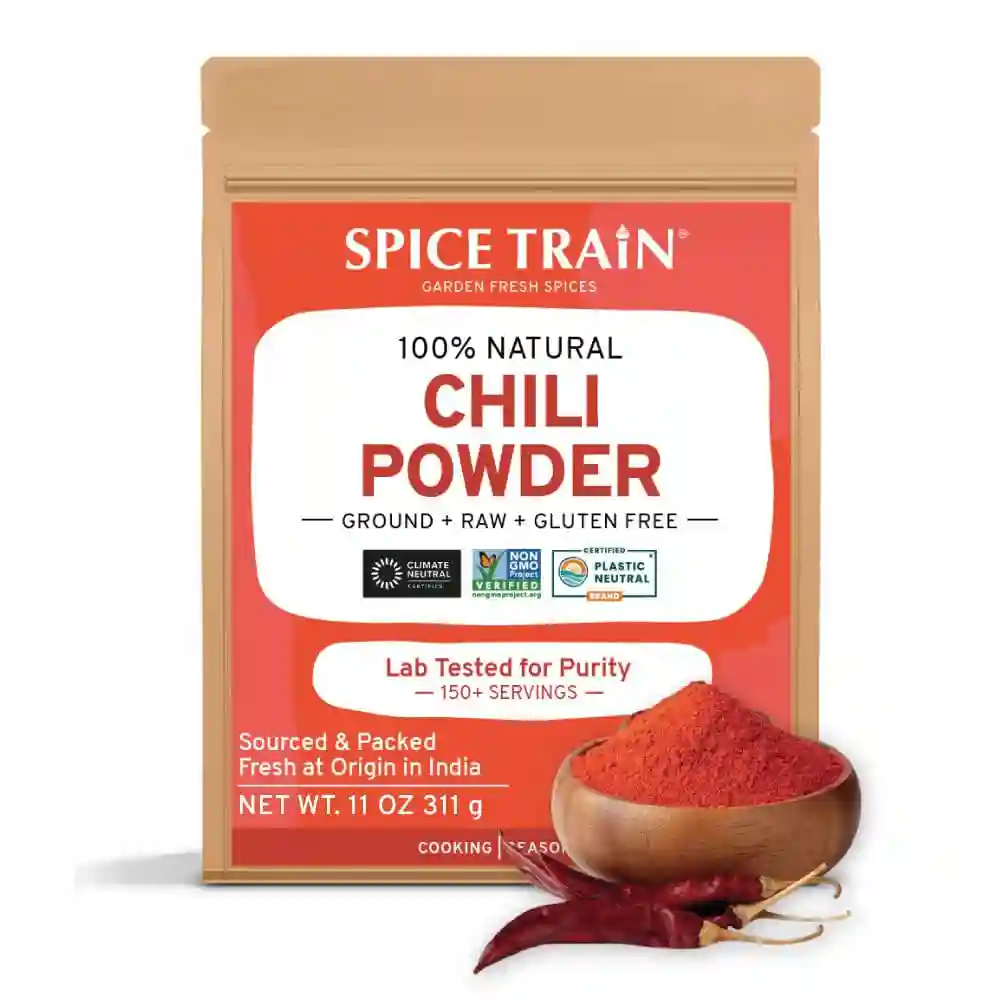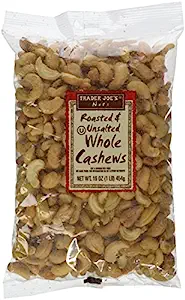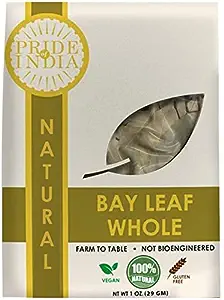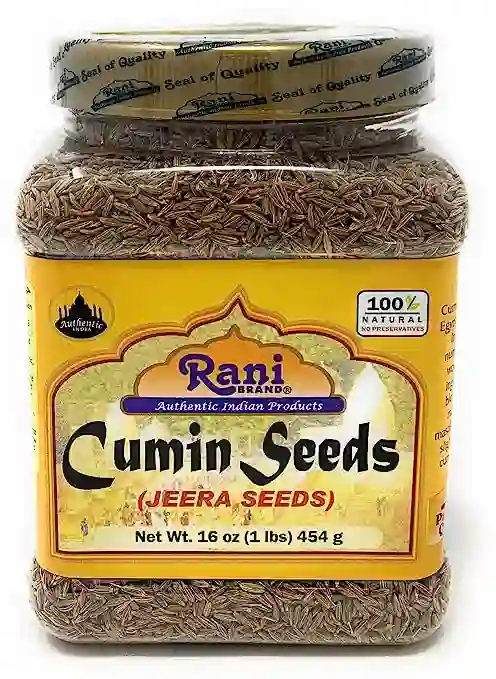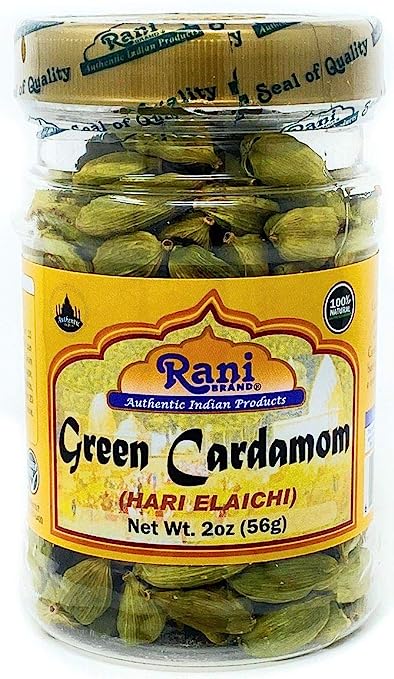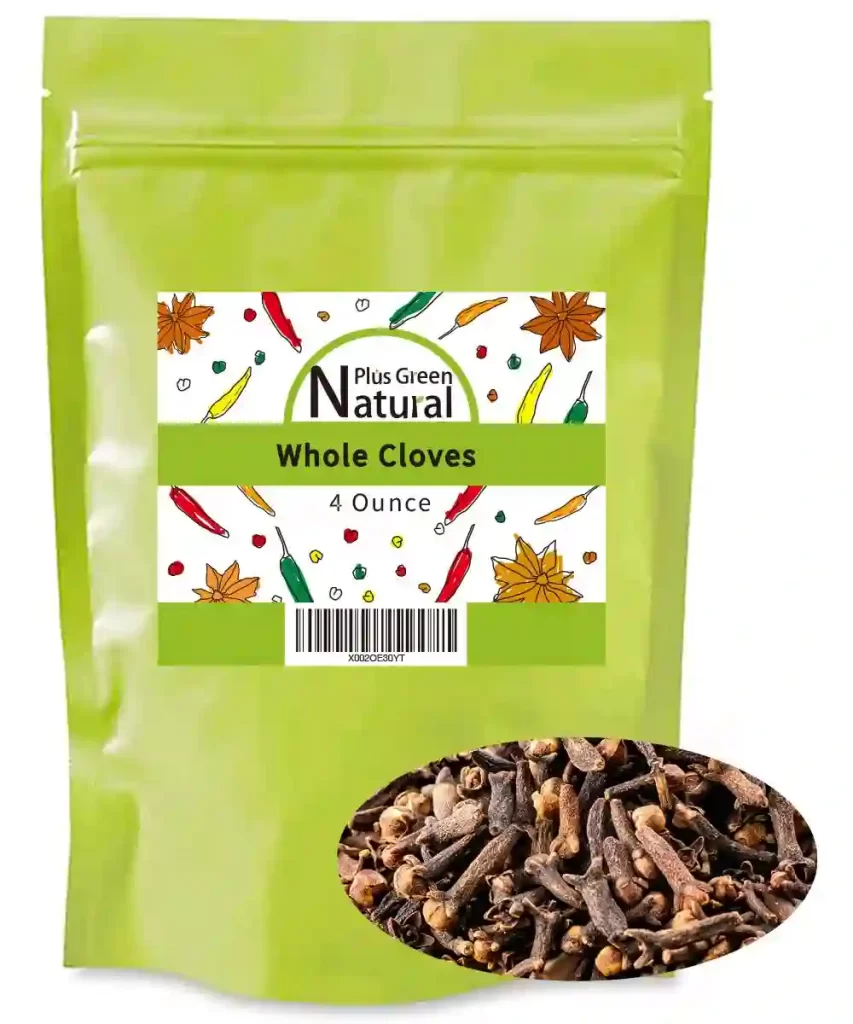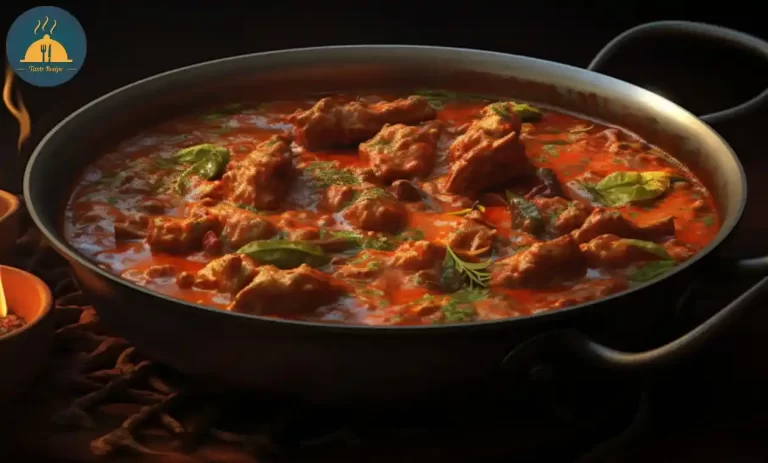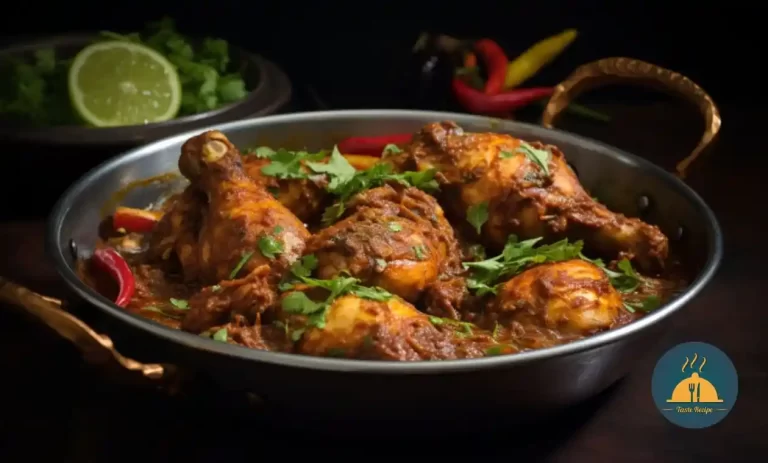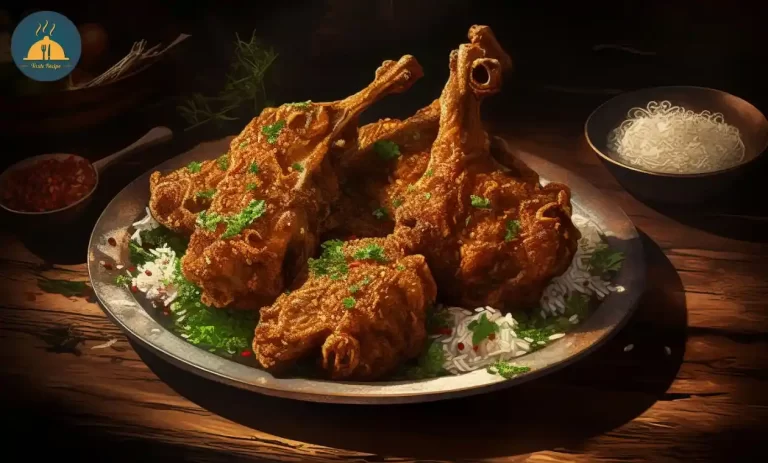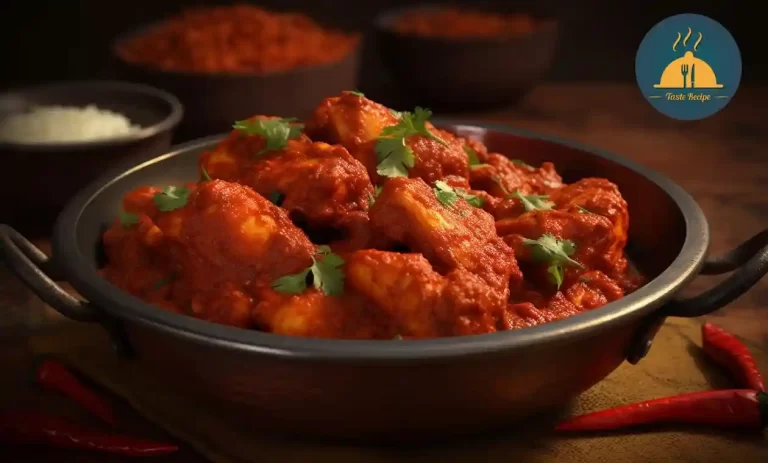Soya Chaap Gravy: A Fusion of Taste and Health
Soya Chaap Gravy Delights: A Vegetarian Extravaganza!
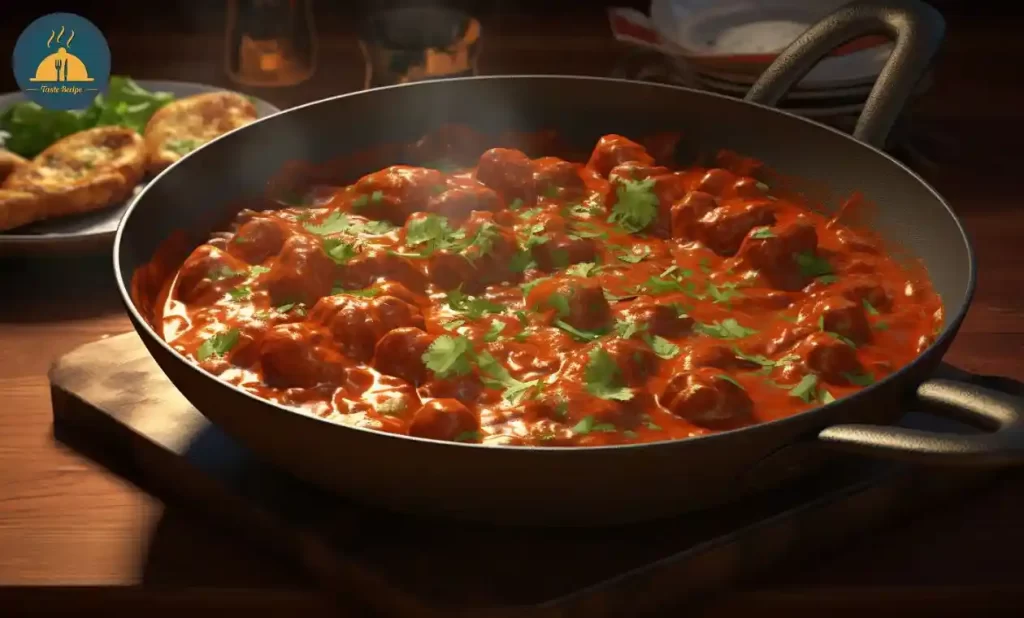
Welcome to the world of “gravy soya chaap,” a delectable and innovative dish that has become a shining star in the realm of vegetarian cuisine. This delightful creation has captured the hearts and taste buds of food enthusiasts worldwide, thanks to its scrumptious flavors and unique texture.
Soya chaap, made from high-protein soybean flour, is a versatile meat substitute that has gained immense popularity among both vegetarians and non-vegetarians. Its ability to mimic the texture and taste of meat makes it an exciting choice for those looking to savor meaty dishes without compromising their dietary preferences.
What sets “gravy soya chaap” apart is its ability to adapt to a myriad of flavors and cooking styles. Whether you prefer it spicy, creamy, or tangy, there’s a perfect gravy soya chaap recipe to suit every palate. From rich and creamy makhani gravy to fiery masala-infused preparations, this dish offers an array of delightful options to explore.
Vegetarians love it for its meat-like texture and the satisfaction it brings to their taste buds. Non-vegetarians appreciate its ability to provide a mouthwatering alternative to meat dishes, making it an excellent choice for those seeking to diversify their culinary experiences.
So, get ready to embark on a gastronomic adventure as we take you through the world of “gravy soya chaap.” This blog promises to reveal the secrets of creating the most delicious and savory recipes that will leave you craving for more. Whether you’re an experienced chef or a novice in the kitchen, our step-by-step instructions and tips will ensure you master the art of making lip-smacking gravy soya chaap dishes. Get ready to tantalize your taste buds and impress your loved ones with these delectable recipes!
Ingredients
- Soya Chaap: The star of the show, soya chaap is the key component that forms the base of this dish. Made from soybean flour, it provides a meaty texture and absorbs the flavors of the gravy exceptionally well.
- Onions: Finely chopped onions form the foundation of the gravy, adding a sweet and savory undertone to the dish.
- Tomatoes: Ripe and juicy tomatoes lend their tanginess and vibrant color to the gravy, creating a delightful balance of flavors.
- Ginger and Garlic: Freshly crushed ginger and garlic add a bold and aromatic profile to the dish, enhancing its overall taste.
- Green Chilies: For those who prefer a spicy kick, green chilies provide the perfect amount of heat to the gravy.
- Cashews or Cream: To give the gravy a rich and creamy texture, you can choose to use either cashews or cream.
- Spices (Cumin Seeds, Bay Leaf, Cardamom, Cinnamon, Cloves): This aromatic blend of spices infuses the gravy with a delightful essence and depth of flavor.
- Red Chili Powder, Turmeric, and Garam Masala: These spices contribute to the dish’s characteristic warmth and robust taste.
- Fresh Coriander Leaves: Chopped coriander leaves add a burst of freshness and brightness to the final dish.
- Oil or Ghee: Use oil or ghee (clarified butter) for cooking, depending on your preference and dietary choices.
Each ingredient plays a crucial role in shaping the flavor and texture of the gravy soya chaap. The soya chaap serves as the meat substitute, providing a chewy and protein-rich element to the dish. Onions, tomatoes, ginger, and garlic form the aromatic base, enhancing the overall taste with their distinct flavors. Green chilies add a touch of spiciness, while cashews or cream impart a luscious creaminess to the gravy. The blend of spices, including cumin seeds, bay leaf, cardamom, cinnamon, and cloves, creates a harmonious medley of aromas. Red chili powder, turmeric, and garam masala bring warmth and depth to the dish, while fresh coriander leaves brighten it up with their herbal notes. Finally, the choice of cooking oil or ghee adds its unique taste and richness to the final preparation.
Different Styles of Gravy Soya Chaap
Classic Indian Gravy Soya Chaap
Classic Indian Gravy Soya Chaap is a timeless and beloved preparation cherished in households and restaurants alike. It showcases the rich flavors and aromatic spices of Indian cuisine, making it a delightful treat for vegetarians and non-vegetarians alike.
Ingredients
- 250g soya chaap
- 2 medium onions, finely chopped
- 2 medium tomatoes, pureed
- 1-inch piece of ginger, grated
- 4-5 garlic cloves, minced
- 2-3 green chilies, finely chopped
- 10-12 cashews, soaked in water
- 1/2 cup fresh cream
- 2 tablespoons oil or ghee
- 1 teaspoon cumin seeds
- 1 bay leaf
- 2-3 green cardamom pods
- 1-inch cinnamon stick
- 2-3 cloves
- 1/2 teaspoon turmeric powder
- 1 teaspoon red chili powder
- 1 teaspoon garam masala
- Salt to taste
- Fresh coriander leaves for garnish
Instructions
- Prepare the soya chaap by cutting it into bite-sized pieces and shallow-frying until lightly golden. Drain excess oil on a paper towel and set aside.
- In a blender, make a smooth paste of soaked cashews, and keep it aside.
- In a large pan or kadhai, heat oil or ghee over medium heat. Add cumin seeds, bay leaf, green cardamom, cinnamon, and cloves. Sauté until aromatic.
- Add the finely chopped onions and cook until they turn golden brown.
- Stir in the grated ginger, minced garlic, and chopped green chilies. Cook for a few more minutes until the raw smell disappears.
- Add the tomato puree and cook until the oil starts to separate from the masala.
- Now, add the cashew paste and mix well. Cook for a couple of minutes to blend the flavors.
- Lower the heat and add turmeric powder, red chili powder, and salt. Mix everything evenly.
- Pour in the fresh cream and stir gently to combine. Allow the gravy to simmer for a few minutes until it thickens.
- Add the shallow-fried soya chaap pieces to the gravy and mix them well to coat with the sauce.
- Sprinkle garam masala over the gravy and give it a final stir.
- Garnish with freshly chopped coriander leaves for a burst of freshness.
- Serve the Classic Indian Gravy Soya Chaap hot with naan, roti, or steamed rice.
The history and cultural significance of Classic Indian Gravy Soya Chaap can be traced back to the rich culinary heritage of North India. This style of preparation showcases the influence of Mughlai and Punjabi cuisine, with its lavish use of aromatic spices and creamy textures. Traditionally, soya chaap was created as a vegetarian alternative to meat dishes, and over time, it has become a beloved delicacy on its own.
- Calories: Approximately 300-350 calories per serving
- Portion size: One serving typically consists of 3-4 pieces of soya chaap with the accompanying gravy.
Spicy and Tangy Soya Chaap
Spicy and Tangy Soya Chaap offers a tantalizing twist to the traditional dish, infusing it with bold, fiery flavors and a burst of tanginess. This variation caters to those who crave an extra kick in their culinary journey.
Ingredients
- 250g soya chaap
- 1 large onion, finely chopped
- 1 large tomato, finely chopped
- 1-inch piece of ginger, grated
- 4-5 garlic cloves, minced
- 2-3 green chilies, finely chopped (adjust according to spice preference)
- 1/4 cup yogurt (curd)
- 1 tablespoon red chili powder (adjust for desired spice level)
- 1/2 teaspoon turmeric powder
- 1 teaspoon cumin seeds
- 1 teaspoon garam masala
- 1 tablespoon lemon juice
- Salt to taste
- Fresh coriander leaves for garnish
- 2 tablespoons oil
Instructions
- Prepare the soya chaap by cutting it into bite-sized pieces. In a pan, heat oil over medium heat and shallow-fry the chaap until it turns slightly golden. Set aside.
- In the same pan, add cumin seeds and let them splutter. Then, add the finely chopped onions and sauté until they become translucent.
- Add the grated ginger, minced garlic, and chopped green chilies. Continue to sauté until the raw aroma disappears.
- Toss in the finely chopped tomatoes and cook until they soften and the oil starts to separate.
- Lower the heat and add red chili powder, turmeric powder, and salt. Mix well to coat the onions and tomatoes with the spices.
- Pour in the yogurt and stir gently to incorporate it into the masala. Allow it to simmer for a few minutes until the masala thickens.
- Add the shallow-fried soya chaap pieces to the masala and coat them well with the spicy sauce.
- Sprinkle garam masala over the dish, giving it an aromatic lift.
- Drizzle lemon juice over the Spicy and Tangy Soya Chaap to enhance the tanginess.
- Garnish with fresh coriander leaves for a burst of color and freshness.
- Serve the Spicy and Tangy Soya Chaap with hot naan or steamed rice.
For those who prefer an even spicier kick, you can increase the amount of red chili powder and green chilies. On the other hand, if you wish to tone down the spiciness, reduce the quantity of red chili powder and green chilies accordingly. The versatility of this dish lies in its adaptability to suit individual taste buds.
- Use Kashmiri red chili powder for a vibrant color without excessive heat.
- Consider adding a splash of honey or a pinch of sugar to balance the spiciness with a touch of sweetness.
- Serve with cooling accompaniments like yogurt raita or cucumber salad to counter the heat.
Creamy Soya Chaap Delight
Creamy Soya Chaap Delight presents a delectable twist to the classic dish by infusing it with a rich and velvety cream sauce. This variation caters to those who seek a luxurious and indulgent experience without compromising on the authentic flavors of the dish.
Ingredients
- 250g soya chaap
- 1 cup fresh cream
- 1 large onion, finely chopped
- 1 large tomato, finely chopped
- 1-inch piece of ginger, grated
- 4-5 garlic cloves, minced
- 2-3 green chilies, finely chopped
- 1/2 cup cashew nuts, soaked in warm water
- 1/4 cup milk
- 1 teaspoon cumin seeds
- 1 teaspoon garam masala
- 1/2 teaspoon turmeric powder
- 1 tablespoon red chili powder (adjust for spice preference)
- 1 tablespoon kasuri methi (dried fenugreek leaves)
- 2 tablespoons ghee (clarified butter)
- Salt to taste
- Fresh coriander leaves for garnish
Instructions
- Start by preparing the soya chaap. Cut it into bite-sized pieces and shallow-fry them in ghee until they turn golden brown. Set aside.
- In a separate pan, heat a tablespoon of ghee over medium heat. Add cumin seeds and let them splutter.
- Add the finely chopped onions and sauté until they become soft and translucent.
- Now, add the grated ginger, minced garlic, and chopped green chilies. Continue to sauté until the raw aroma disappears.
- Add the chopped tomatoes and cook until they turn mushy and the oil starts to separate.
- While the tomatoes cook, drain the soaked cashew nuts and blend them into a smooth paste using milk. Set the creamy cashew paste aside.
- Lower the heat and add red chili powder, turmeric powder, and salt to the tomato-onion masala. Mix well to coat the vegetables with the spices.
- Pour in the fresh cream and stir gently to combine it with the masala, creating a luscious and creamy base.
- Add the shallow-fried soya chaap pieces to the creamy masala. Ensure that each piece is coated generously with the creamy sauce.
- Sprinkle garam masala and kasuri methi over the dish, enhancing its fragrance and taste.
- Let the Creamy Soya Chaap Delight simmer on low heat for a few minutes, allowing the flavors to meld.
- Garnish with fresh coriander leaves, adding a burst of freshness and color.
- Serve the Creamy Soya Chaap Delight with hot naan or fragrant basmati rice.
- For an even richer and silkier texture, you can add a tablespoon of butter along with the ghee.
- Consider using full-fat milk or cream for an extra indulgent experience.
- Alternatively, you can blend a handful of blanched and peeled almonds along with the cashews for added creaminess.
Taste Recipe Special Style
Taste Recipe Special Style brings a tantalizing and innovative approach to gravy soya chaap, combining unique flavors to create a dish that will delight your taste buds. Our exclusive take on this classic recipe aims to elevate the dining experience and leave a lasting impression on your palate.
Ingredients
- 250g soya chaap
- 1 cup pineapple chunks (fresh or canned)
- 1 large onion, finely chopped
- 1 large tomato, finely chopped
- 1-inch piece of ginger, grated
- 4-5 garlic cloves, minced
- 2-3 green chilies, finely chopped
- 1/2 cup yogurt (curd)
- 1 teaspoon cumin seeds
- 1 teaspoon turmeric powder
- 1 tablespoon coriander powder
- 1 tablespoon red chili powder (adjust for spice preference)
- 1/2 teaspoon garam masala
- 1/2 teaspoon chaat masala
- 2 tablespoons vegetable oil
- Salt to taste
- Fresh coriander leaves for garnish
Instructions
- Start by preparing the soya chaap. Cut it into bite-sized pieces and shallow-fry them in vegetable oil until they turn golden brown. Set aside.
- In a separate pan, heat a tablespoon of vegetable oil over medium heat. Add cumin seeds and let them splutter.
- Add the finely chopped onions and sauté until they become soft and translucent.
- Now, add the grated ginger, minced garlic, and chopped green chilies. Continue to sauté until the raw aroma disappears.
- Add the chopped tomatoes and cook until they turn mushy and the oil starts to separate.
- Lower the heat and add turmeric powder, coriander powder, red chili powder, and salt to the masala. Mix well to coat the vegetables with the spices.
- Add the shallow-fried soya chaap pieces to the masala and mix them gently, ensuring they are coated evenly.
- Pour in the yogurt (curd) and stir to combine it with the masala, creating a creamy and tangy sauce.
- Add the pineapple chunks to the dish, infusing it with a burst of tropical sweetness and tanginess.
- Sprinkle garam masala and chaat masala over the Spiced Pineapple Soya Chaap, enhancing its aromatic flavors.
- Let the dish simmer on low heat for a few minutes, allowing the flavors to blend harmoniously.
- Garnish with fresh coriander leaves, adding a touch of freshness and vibrancy to the presentation.
- Serve the Spiced Pineapple Soya Chaap with hot naan or steamed rice, delighting in the perfect balance of sweet, tangy, and spicy notes.
Our Taste Recipe Special Style of gravy soya chaap promises to be a delightful surprise for your taste buds. The combination of juicy pineapple and flavorful spices takes this dish to a whole new level, leaving you craving for more.
Our Recommended Ingredients
Soya Chaap:
Soya chaap is a versatile and protein-rich vegetarian ingredient made from soybeans. It has a meaty texture, making it an excellent alternative to meat in various dishes. With its ability to absorb flavors, soya chaap can be used in curries, gravies, and even grilled or barbecued. Try adding this plant-based protein to your favorite recipes for a wholesome and delicious meal.
Turmeric Powder:
Turmeric powder is a vibrant yellow spice with numerous health benefits and culinary uses. It is known for its anti-inflammatory properties and is a staple in Indian cuisine. Add a pinch of turmeric powder to curries, rice dishes, or even smoothies for a dash of color and flavor. Enhance your dishes and enjoy the many health benefits that turmeric offers.
Cumin Powder:
Cumin powder, also known as ground cumin, is a spice with a warm and earthy flavor. It is widely used in Indian, Middle Eastern, and Mexican cuisines. Sprinkle some cumin powder in curries, stews, or on roasted vegetables to elevate their taste. This aromatic spice is a must-have in your kitchen pantry.
Coriander Powder:
Coriander powder is a versatile spice with a mild and citrusy flavor. Ground from dried coriander seeds, it adds depth to curries, soups, and marinades. This essential spice complements a wide range of dishes, making it a pantry staple for any culinary enthusiast.
Garam Masala Powder:
Garam masala is a fragrant spice blend commonly used in Indian cuisine. It adds warmth and complexity to dishes, making it a key ingredient in curries and gravies. A pinch of garam masala can transform your cooking and transport your taste buds to new culinary heights.
Red Chili Powder:
Red chili powder is a fiery spice that adds a bold kick to dishes. It is made from dried and ground red chili peppers, bringing heat to various cuisines. Adjust the quantity to your preferred spice level, and use it to add vibrant color and a burst of heat to your favorite recipes.
Cashew Nuts:
Cashew nuts are creamy and delicious nuts that offer a rich buttery flavor. They are versatile ingredients used in both savory and sweet dishes. Add a handful of cashews to curries, salads, or desserts to add a delightful crunch and richness to your meals.
Bay Leaf:
Bay leaves are aromatic leaves used to add a subtle and earthy flavor to dishes. They are commonly used in soups, stews, and rice dishes. A single bay leaf can enhance the taste of an entire recipe. Discover the magic of bay leaves in your cooking.
Cumin Seeds:
Cumin seeds are small, oblong seeds known for their warm and nutty flavor. They are frequently used in Indian, Middle Eastern, and Mexican cuisines. Toast or temper cumin seeds in oil before adding other ingredients to bring out their full aroma and taste.
Cardamom:
Cardamom is a highly aromatic spice with a sweet and floral taste. It is used in both sweet and savory dishes and is a key ingredient in Indian desserts like kheer and gulab jamun. A pinch of cardamom can transform your recipes into culinary delights.
Cinnamon:
Cinnamon is a warm and sweet spice with a distinctive flavor. It is widely used in baking, desserts, and beverages. A sprinkle of cinnamon can add a comforting touch to your dishes and infuse them with a delightful aroma.
Cloves:
Cloves are aromatic flower buds with a strong and pungent flavor. They are used in both sweet and savory dishes, especially in spice blends like garam masala. Add a few cloves to rice dishes, curries, or infuse them in warm beverages for a soothing and flavorful experience.
Tips and Recommendations
Cooking Perfect Soya Chaap
- Marinating: For enhanced flavor, marinate the soya chaap with a mixture of yogurt (curd), spices, and a little oil. Let it rest for at least 30 minutes or more to allow the flavors to penetrate the chaap.
- Shallow-frying: Instead of deep-frying, opt for shallow-frying the soya chaap. This method reduces the oil content while still achieving a crispy and golden texture.
- Grilling: If you prefer a healthier option, consider grilling the marinated soya chaap. The smoky charred flavor adds a unique dimension to the dish.
- Pre-soaking: If using dry soya chaap, soak it in warm water for about 15-20 minutes before marinating or cooking. This step helps soften the chaap and reduce its chewiness.
Variations and Substitutions
- Vegan Option: To make a vegan version of gravy soya chaap, replace the yogurt with plant-based yogurt or coconut milk. Use vegan ghee or vegetable oil for frying.
- Gluten-Free: Ensure that the soya chaap you use is gluten-free, as some varieties may contain wheat-based ingredients.
- Spices: Adjust the spice level according to your taste preferences. Increase or decrease the amount of red chili powder and green chilies as desired.
- Sauces: For a saucier version, add tomato puree or canned tomato sauce along with the spices. This will create a rich and thicker gravy.
Serving, Garnishing, and Pairing
- Serving: Gravy soya chaap pairs well with Indian bread like naan, roti, or paratha. It also complements steamed rice or pulao, providing a delightful meal.
- Garnishing: Sprinkle some fresh coriander leaves or chopped green chilies on top to add a pop of color and freshness.
- Side Dishes: Serve with a side of refreshing cucumber and onion salad or pickles for a contrasting taste.
- Pairing: Pair this delectable dish with a cooling yogurt-based raita or mint chutney to balance the flavors.
- Beverage: Enjoy gravy soya chaap with a refreshing glass of lassi (a yogurt-based drink) or a cold beverage of your choice.
With these tips and recommendations, you can customize gravy soya chaap to suit your dietary needs and preferences. Experiment with different variations and garnishes to create a delicious and satisfying meal that everyone will love.
In Crux
In conclusion, gravy soya chaap is a versatile and delicious dish that holds a special place in Indian cuisine. We have explored different styles of preparing this delectable dish, each with its unique flavors and appeal. Let’s recap the main points covered in this blog:
- Introduction: We began by introducing gravy soya chaap, highlighting its popularity in vegetarian cuisine. Its versatility makes it a favorite among both vegetarians and non-vegetarians.
- Ingredients: We provided a comprehensive list of all the ingredients required to make this delightful dish. Each ingredient plays a crucial role in enhancing the taste and texture of gravy soya chaap.
- Different Styles of Gravy Soya Chaap: We explored four different styles of preparing this dish.
- Classic Indian Gravy Soya Chaap: The traditional Indian preparation with a rich and flavorful sauce that has a cultural significance.
- Spicy and Tangy Soya Chaap: A hot and tangy version with a delightful balance of spices, offering a burst of flavors.
- Creamy Soya Chaap Delight: An indulgent variation with a luscious creamy sauce that adds a touch of luxury to the dish.
- Taste Recipe Special Style: Our unique take on gravy soya chaap, offers a twist that sets it apart from the traditional versions.
- Tips and Recommendations: We provided helpful tips for cooking perfect soya chaap, along with suggestions for variations and substitutions to accommodate specific dietary preferences.
Now, we encourage all our readers to embark on a culinary adventure and try these various styles of gravy soya chaap in their kitchens. Whether you are a seasoned chef or a cooking enthusiast, these recipes are easy to follow and are sure to impress your family and friends.
We value your feedback and would love to hear about your experiences with these recipes. Feel free to share your thoughts, suggestions, and any modifications you made to make the dish your own. Your comments and feedback will not only help us improve but also inspire other readers to try these delicious recipes.
So, get ready to tantalize your taste buds and dive into the world of flavors with gravy soya chaap. Happy cooking!
FAQs about Soya Chaap Gravy
How do I make gravy soya chaap from scratch?
To make gravy soya chaap from scratch, you will need soya chunks, onions, tomatoes, garlic, ginger, and a blend of aromatic spices. The soya chunks are first soaked and then cooked in a tomato-based gravy to infuse them with delicious flavors.
Can I make gravy soya chaap without dairy?
Yes, you can make a dairy-free version of gravy soya chaap by substituting dairy ingredients like cream or yogurt with coconut milk or cashew paste. This alternative adds a creamy texture and enhances the taste, making it suitable for those with lactose intolerance or a vegan diet.
Is gravy soya chaap suitable for a low-carb diet?
Gravy soya chaap can be modified to fit a low-carb diet by reducing the number of tomatoes and onions used in the gravy. You can also skip using cornstarch or any thickening agents to keep the dish low in carbs.
How do I store leftovers of gravy soya chaap?
To store leftovers of gravy soya chaap, allow it to cool down to room temperature and then transfer it to an airtight container. Refrigerate for up to 3 days or freeze for up to 2 weeks for longer shelf life.
Can I reheat frozen gravy soya chaap?
Yes, you can reheat frozen gravy soya chaap by thawing it in the refrigerator overnight and then reheating it on the stovetop or in the microwave until thoroughly heated.
What are the health benefits of soya chaap?
Soya chaap is a good source of plant-based protein, making it an excellent option for vegetarians and vegans. It also contains essential amino acids, fiber, and various vitamins and minerals, promoting overall health.
Can I use store-bought gravy for soya chaap?
While store-bought gravy can be convenient, making your gravy allows you to control the ingredients and flavors. Homemade gravy offers a fresher and more authentic taste to your dish.
How can I make my gravy soya chaap spicier?
To make your gravy soya chaap spicier, you can add extra red chili powder, green chilies, or chili flakes during the cooking process. Adjust the spice level according to your preference to achieve the desired heat.
What can I serve with gravy soya chaap?
Gravy soya chaap pairs well with various Indian bread like naan, roti, or paratha. It also goes perfectly with steamed rice, jeera rice, or pulao. Accompany it with a side of fresh salad or raita to balance the flavors and add freshness to the meal.


